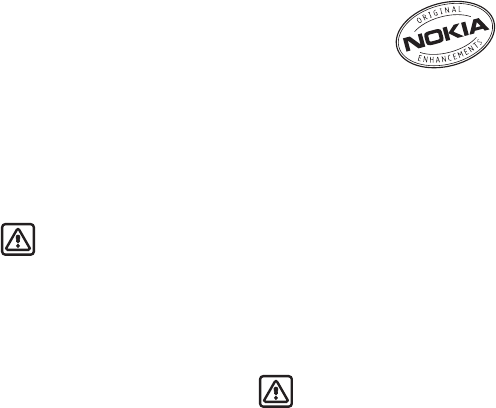
Enhancements
68
Copyright © 2006 Nokia. All rights reserved.
14. Enhancements
Check the model number of any
charger before use with this
device. This device is intended for
use when supplied with power
from Nokia AC-3 charger.
Warning: Use only
batteries, chargers and
enhancements approved
by Nokia for use with this
particular model. The use
of any other types may
invalidate any approval or
warranty, and may be
dangerous. For availability
of approved
enhancements, please
check with your dealer.
A few practical rules about
accessories and enhancements:
• Keep all accessories and
enhancements out of the reach
of small children.
• When you disconnect the
power cord of any accessory or
enhancement, grasp and pull
the plug, not the cord.
• Check regularly that
enhancements installed in a
vehicle are mounted and are
operating properly.
• Installation of any complex car
enhancements must be made
by qualified personnel only.
Power
• Standard Li-Ion Battery (BL-5C)
• Compact Charger (AC-3)
• Travel Charger (AC-4)
• Car Power Adapter (DC-4)
Audio
• Headset (HS-9)
Warning: When using the
headset your ability to
hear outside sounds may
be affected. Do not use the
headset where it can
endanger your safety.
